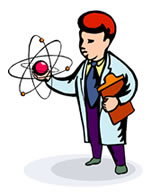
Physicists have created light out of nothing by simulating moving a mirror at nearly the speed of light:
At the heart of the experiment is one of the weirdest, and most important, tenets of quantum mechanics: the principle that empty space is anything but. Quantum theory predicts that a vacuum is actually a writhing foam of particles flitting in and out of existence.The physicists have managed to build such a "mirror-like" device using quantum electronics, and confirmed the predictions: Full Story.
The existence of these particles is so fleeting that they are often described as virtual, yet they can have tangible effects. For example, if two mirrors are placed extremely close together, the kinds of virtual light particles, or photons, that can exist between them can be limited. The limit means that more virtual photons exist outside the mirrors than between them, creating a force that pushes the plates together. This 'Casimir force' is strong enough at short distances for scientists to physically measure it.
For decades, theorists have predicted that a similar effect can be produced in a single mirror that is moving very quickly. According to theory, a mirror can absorb energy from virtual photons onto its surface and then re-emit that energy as real photons. The effect only works when the mirror is moving through a vacuum at nearly the speed of light — which is almost impossible for everyday mechanical devices. [...]

No comments:
Post a Comment